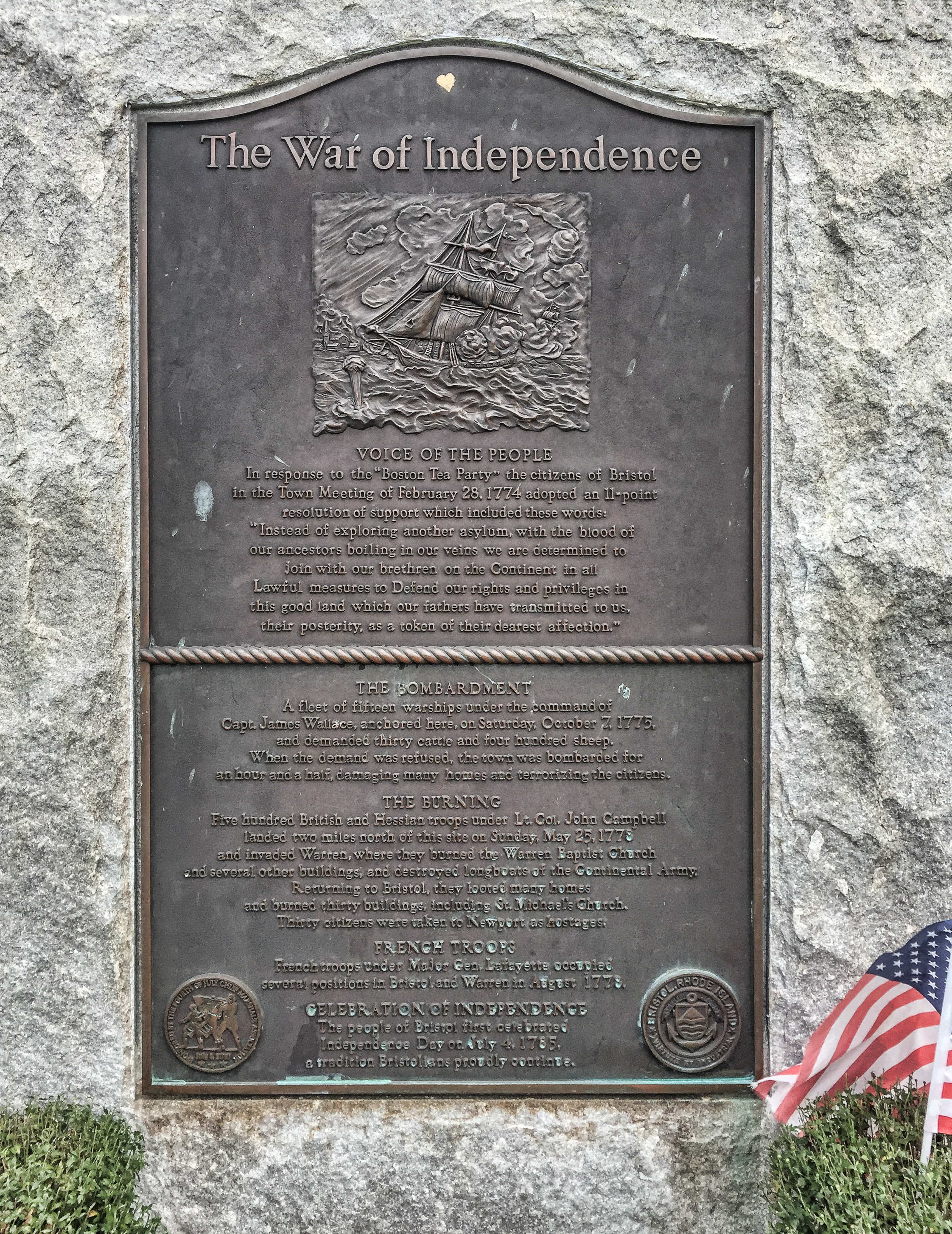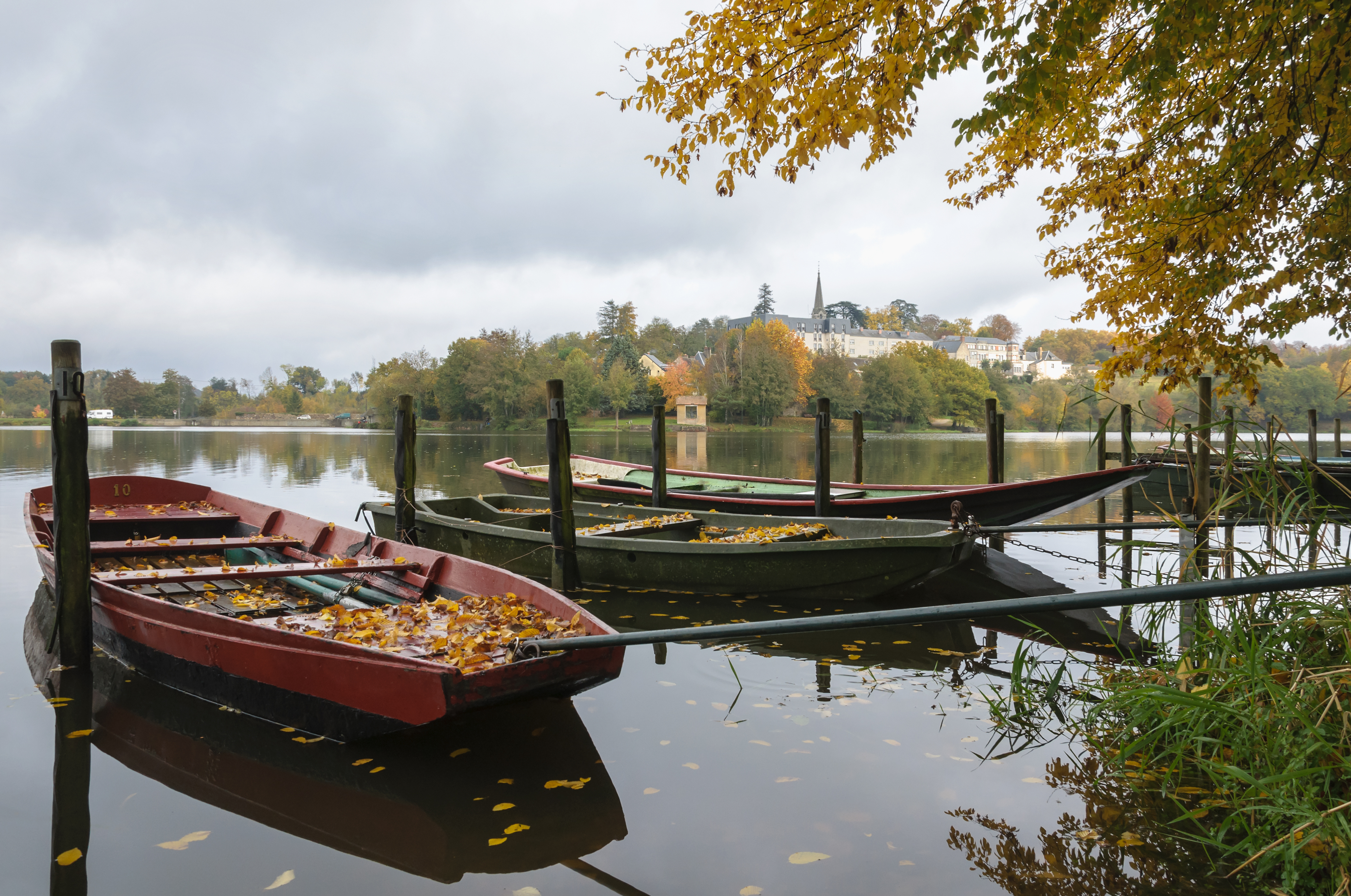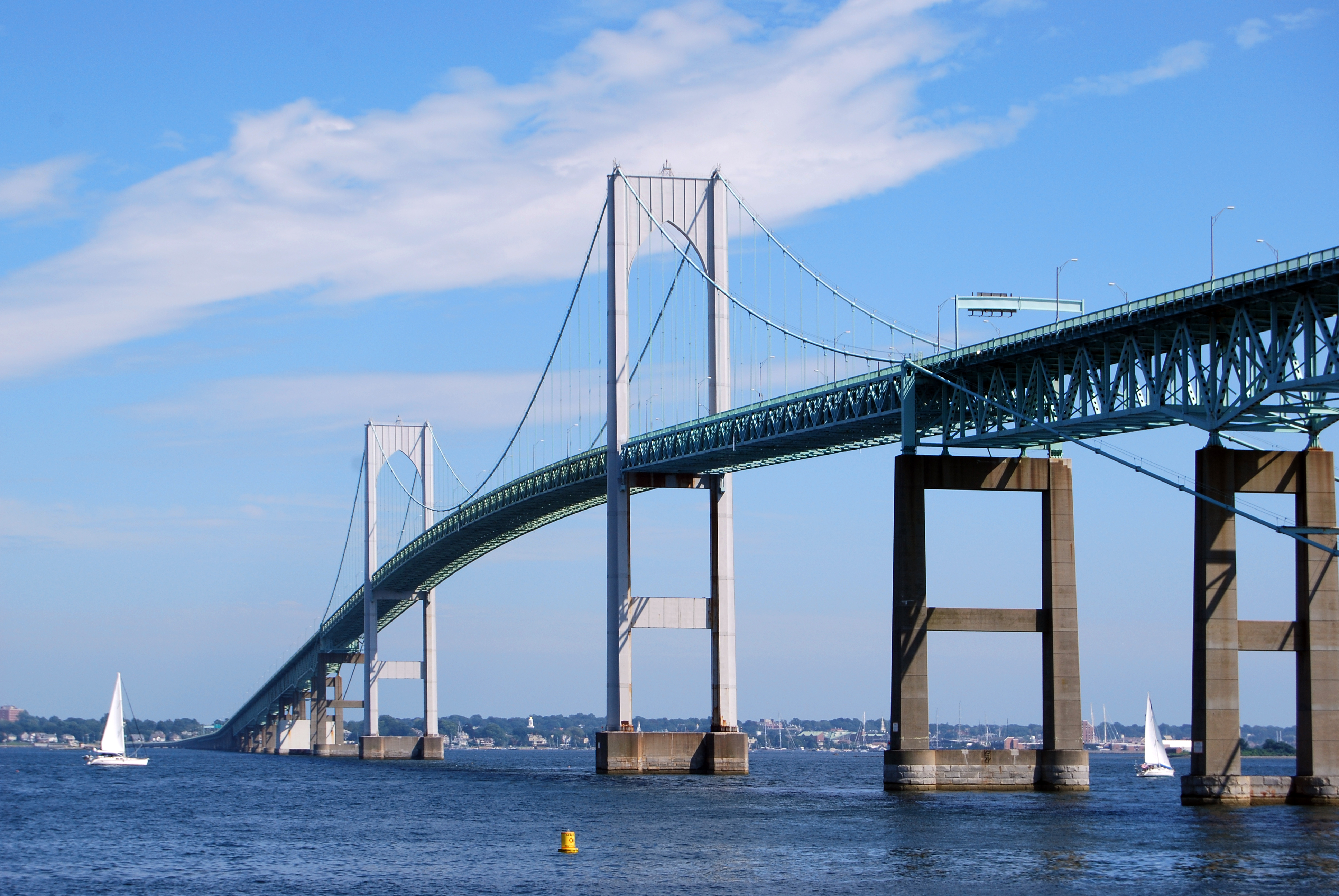|
Mount Hope Bay Raids
The Mount Hope Bay raids were a series of military raids conducted by British troops during the American Revolutionary War against communities on the shores of Mount Hope Bay on May 25 and 31, 1778. The towns of Bristol, Rhode Island, Bristol and Warren, Rhode Island were significantly damaged, and Freetown, Massachusetts (present-day Fall River, Massachusetts, Fall River) was also attacked, although its militia resisted British attacks more successfully. The British destroyed military defenses in the area, including supplies that had been cached by the Continental Army in anticipation of an assault on British-occupied Newport, Rhode Island. Homes as well as municipal and religious buildings were also destroyed in the raids. On May 25, 500 British and Hessian (soldiers), Hessian soldiers, under orders from General Sir Robert Pigot, 2nd Baronet, Sir Robert Pigot, the commander of the British garrison at Newport, Rhode Island, landed between Bristol and Warren, destroyed boats an ... [...More Info...] [...Related Items...] OR: [Wikipedia] [Google] [Baidu] |
Sir Robert Pigot, 2nd Baronet
Sir Robert Pigot, 2nd Baronet (20 September 1720 – 1 August 1796) was a Great Britain, British Army officer during the American Revolutionary War. Life Robert Pigot was born in London, England in 1720. His two brothers were George Pigot, 1st Baron Pigot, Governor of Chennai, Madras, India and Admiral Hugh Pigot (18th century admiral), Hugh Pigot, Commander-in-Chief of the Caribbean, West Indies fleet. He and his brothers shared Huguenot ancestry through their grandfather Peter Godde, who had come to England in the late seventeenth century. In 1758 Pigot was major in the 10th Regiment of Foot. In 1764 he was lieutenant colonel. From 1769 to 1775 he was the commander of the 38th Regiment of Foot. He also served as a member of parliament for Wallingford (UK Parliament constituency), Wallingford from 1768 to 1772. He was appointed Warden of the Mint from August, 1771 until his death. On 17 June 1775 he commanded the left flank of the British assault in the Battle of Bunker Hill ... [...More Info...] [...Related Items...] OR: [Wikipedia] [Google] [Baidu] |
George Washington
George Washington (February 22, 1732, 1799) was an American military officer, statesman, and Founding Father who served as the first president of the United States from 1789 to 1797. Appointed by the Continental Congress as commander of the Continental Army, Washington led the Patriot forces to victory in the American Revolutionary War and served as the president of the Constitutional Convention of 1787, which created the Constitution of the United States and the American federal government. Washington has been called the " Father of his Country" for his manifold leadership in the formative days of the country. Washington's first public office was serving as the official surveyor of Culpeper County, Virginia, from 1749 to 1750. Subsequently, he received his first military training (as well as a command with the Virginia Regiment) during the French and Indian War. He was later elected to the Virginia House of Burgesses and was named a delegate to the Continental Congress ... [...More Info...] [...Related Items...] OR: [Wikipedia] [Google] [Baidu] |
Flat-bottomed Boat
A flat-bottomed boat is a boat with a shallow draft, two-chined hull, which allows it to be used in shallow bodies of water, such as rivers, because it is less likely to ground. The flat hull also makes the boat more stable in calm water, which is good for hunters and anglers. However this design becomes less stable in choppy water. This is because it causes the boat to travel ''on'' the water, instead of ''through'' it, as a boat with a rounded or V-shaped hull would. Flat hulls are simple to construct, making them popular with boat-building hobbyists. In Britain they came to popular notice during the planned French invasion of Britain in 1759, when a large-number of flat-bottomed boats were prepared by the French to ferry their invasion force across the channel and a number were destroyed during the British Raid on Le Havre. The flat-bottoms are mentioned in the song ''Heart of Oak'' written by David Garrick during 1759. Types *Barge *Bateau * Bull boat * Car floa ... [...More Info...] [...Related Items...] OR: [Wikipedia] [Google] [Baidu] |
USS Spitfire (1776)
USS ''Spitfire'' was a galley, row galley authorized and constructed by Rhode Island during the American Revolution, and was placed in service in 1776 in the Rhode Island Navy. During this age of sail, row galleys were highly maneuverable compared to sailing ships whose movements were dependent on the wind. ''Spitfire'' had a reportedly successful career, helping to capture British cargo ships and engaging in the fight against British warships. Ordered by Rhode Island Late in 1775, the Rhode Island General Assembly, General Assembly of Rhode Island ordered the construction of two galleys, USS Washington (1776 row galley), ''Washington'' and ''Spitfire''. In January 1776, the General Assembly appointed John Grimes Commodore of the galleys and, presumably soon thereafter, they were placed in service in Narragansett Bay. Capturing British cargo ships They cruised in defense of American shipping, acted as transports, and assisted landing parties seeking forage and supplies. On 11 A ... [...More Info...] [...Related Items...] OR: [Wikipedia] [Google] [Baidu] |
HM Galley Pigot
Two vessels of the Royal Navy have borne the name, HM galley ''Pigot''. Both were acquired in 1778 during the American Revolutionary War, and both were lost that year; her crew destroyed the first to avoid her capture, and the Americans captured the second. Both were named for General Sir Robert Pigot, the general commanding the British Army at Newport, Rhode Island, during their service there. First galley ''Pigot'' On 16 May 1778, ''Pigot'', (or ''Pigott'') took her station in the Seconnet. ''Pigot'' was the former tender, ''Lady Parker'', a schooner, that had been fitted out as a galley. The British at Newport now had three galleys, , ''Pigot'', and ''Spitfire''. They also had a new galley equipping. Earlier, Lieutenant (and future admiral and baron) James Saumarez had commanded ''Lady Parker'' for some months until 17 February 1778, when he had been given command of ''Spitfire''. Lieutenant Sir Henry Edwin Stanhope, of , was appointed to command the ''Pigot'' galley. On 25 M ... [...More Info...] [...Related Items...] OR: [Wikipedia] [Google] [Baidu] |
French Ship Vestale (1756)
''Vestale'' was a 30-gun frigate of the French Navy. The Royal Navy captured her in 1761, but had to scuttle her in 1778 to avoid having the French recapture her. She was refloated and sold to the French in 1784. She returned to wartime service in 1794 as a privateer. The British recaptured her in 1798 and broke her up thereafter. ''Vestale'' She took part in the Battle of Quiberon Bay (November 1759). captured her on 8 January 1761. ''Vestale'', under the command of M. Boisbertelot, had been part of a squadron of five ships that had left the Vilaine river for Brest under the cover of a heavy fog. When ''Unicorn'' encountered ''Vestale'' off the Penmarks a two-hour engagement ensued until ''Vestale'' struck. Hunt received a wound at the third broadside and died of his injuries an hour after the action ended. The British had five killed and ten wounded, the majority of them dangerously. The French had many killed and wounded, among them Captain Boisbertelot, who lost a leg, an ... [...More Info...] [...Related Items...] OR: [Wikipedia] [Google] [Baidu] |
Providence, Rhode Island
Providence is the capital and most populous city of the U.S. state of Rhode Island. One of the oldest cities in New England, it was founded in 1636 by Roger Williams, a Reformed Baptist theologian and religious exile from the Massachusetts Bay Colony. He named the area in honor of "God's merciful Providence" which he believed was responsible for revealing such a haven for him and his followers. The city developed as a busy port as it is situated at the mouth of the Providence River in Providence County, at the head of Narragansett Bay. Providence was one of the first cities in the country to industrialize and became noted for its textile manufacturing and subsequent machine tool, jewelry, and silverware industries. Today, the city of Providence is home to eight hospitals and List of colleges and universities in Rhode Island#Institutions, eight institutions of higher learning which have shifted the city's economy into service industries, though it still retains some manufacturin ... [...More Info...] [...Related Items...] OR: [Wikipedia] [Google] [Baidu] |
Mount Hope Bay USGS Map
Mount is often used as part of the name of specific mountains, e.g. Mount Everest. Mount or Mounts may also refer to: Places * Mount, Cornwall, a village in Warleggan parish, England * Mount, Perranzabuloe, a hamlet in Perranzabuloe parish, Cornwall, England * Mounts, Indiana, a community in Gibson County, Indiana, United States People * Mount (surname) * William L. Mounts (1862–1929), American lawyer and politician Computing and software * Mount (computing), the process of making a file system accessible * Mount (Unix), the utility in Unix-like operating systems which mounts file systems Displays and equipment * Mount, a fixed point for attaching equipment, such as a hardpoint on an airframe * Mounting board, in picture framing * Mount, a hanging scroll for mounting paintings * Mount, to display an item on a heavy backing such as foamcore, e.g.: ** To pin a biological specimen, on a heavy backing in a stretched stable position for ease of dissection or display ** To pr ... [...More Info...] [...Related Items...] OR: [Wikipedia] [Google] [Baidu] |
Sloop
A sloop is a sailboat with a single mast typically having only one headsail in front of the mast and one mainsail aft of (behind) the mast. Such an arrangement is called a fore-and-aft rig, and can be rigged as a Bermuda rig with triangular sails fore and aft, or as a gaff-rig with triangular foresail(s) and a gaff rigged mainsail. Sailboats can be classified according to type of rig, and so a sailboat may be a sloop, catboat, cutter, ketch, yawl, or schooner. A sloop usually has only one headsail, although an exception is the Friendship sloop, which is usually gaff-rigged with a bowsprit and multiple headsails. If the vessel has two or more headsails, the term cutter may be used, especially if the mast is stepped further towards the back of the boat. When going before the wind, a sloop may carry a square-rigged topsail which will be hung from a topsail yard and be supported from below by a crossjack. This sail often has a large hollow foot, and this foot is sometimes fil ... [...More Info...] [...Related Items...] OR: [Wikipedia] [Google] [Baidu] |
Kickamuit River
The Kickamuit River (often called the ''Kickemuit River'') is a river in the states of Massachusetts and Rhode Island flowing approximately .U.S. Geological Survey. National Hydrography Dataset high-resolution flowline dataThe National Map , accessed April 1, 2011 History The name ''Kickamuit'' is a Narragansett word that has numerous spellings. The river was a major traffic artery during the American Revolutionary War, and supplies traveled upriver daily. By the 1800s, oyster beds were a major revenue source, but effluent from the nearby Parker Mills and general sewage pollution killed most of the oysters by 1910. The Kickamuit River oyster industry was ended with the 1938 New England hurricane. The Kickamuit River is classified as a Class A, Type II Waterway and open to both recreational activities and shell-fishing. Course The river's source is in Rehoboth, Massachusetts in the swamps north of Locust Street in Swansea. From here it flows due south to Swansea and into the Wa ... [...More Info...] [...Related Items...] OR: [Wikipedia] [Google] [Baidu] |
Whaleboat
A whaleboat is a type of open boat that was used for catching whales, or a boat of similar design that retained the name when used for a different purpose. Some whaleboats were used from whaling ships. Other whaleboats would operate from the shore. Later whaleboats usually could operate under sail or oar - American whaling crews in particular obtained better results by making their first approach to a whale under sail, then quickly unstepping the mast and using oars thereafter. Most whaleboats have double-ended, clinker-built hulls of light construction. The hulls were narrow and with sharp ends to achieve the best possible speed for the length of waterline. Length was between 27 and 31 feet. Beam was just over a fifth of the length. Typically they were propelled by five oars when rowed, and stepped a single removable mast when under sail. A rudder was used when under sail and a steering oar when the boat was rowed. The latter provided the manoeuvrability needed when closing wi ... [...More Info...] [...Related Items...] OR: [Wikipedia] [Google] [Baidu] |
Aquidneck Island
Aquidneck Island, also known as Rhode Island, is an island in Narragansett Bay in the state of Rhode Island. The total land area is , which makes it the largest island in the bay. The 2020 United States Census reported its population as 60,109. The state of Rhode Island is named after the island; the United States Board on Geographic Names recognizes Rhode Island as the name for the island, although it is widely referred to as Aquidneck Island in the state and by the island's residents. Aquidneck Island is home to three towns, from north to south: Portsmouth, Middletown, and Newport. Etymology "Aquidneck" is derived from the Narragansett name for the island ''aquidnet''. Roger Williams was an authority on the Narragansett language, but he stated that he never learned the word's meaning. It is unclear how it came to be known as Rhode Island, but the earliest known use of the name was in 1637 by Roger Williams, and it was officially applied to the island in 1644: "Aquethneck sha ... [...More Info...] [...Related Items...] OR: [Wikipedia] [Google] [Baidu] |






